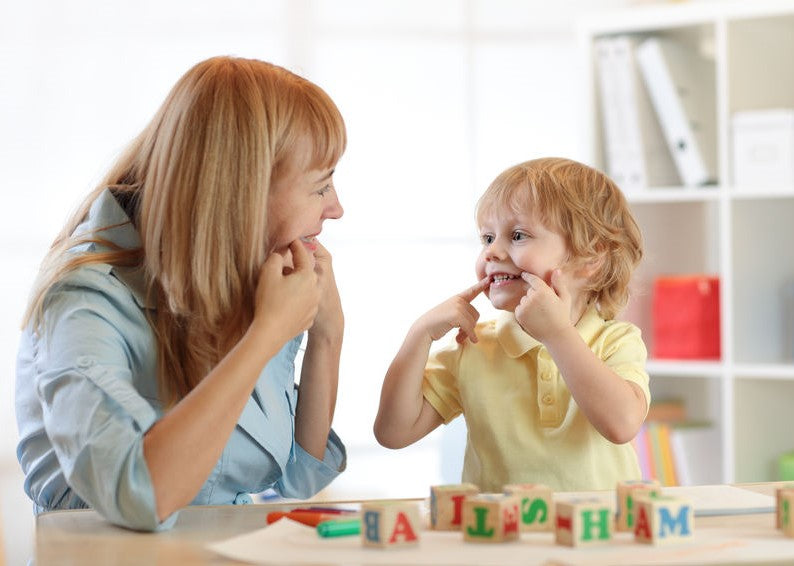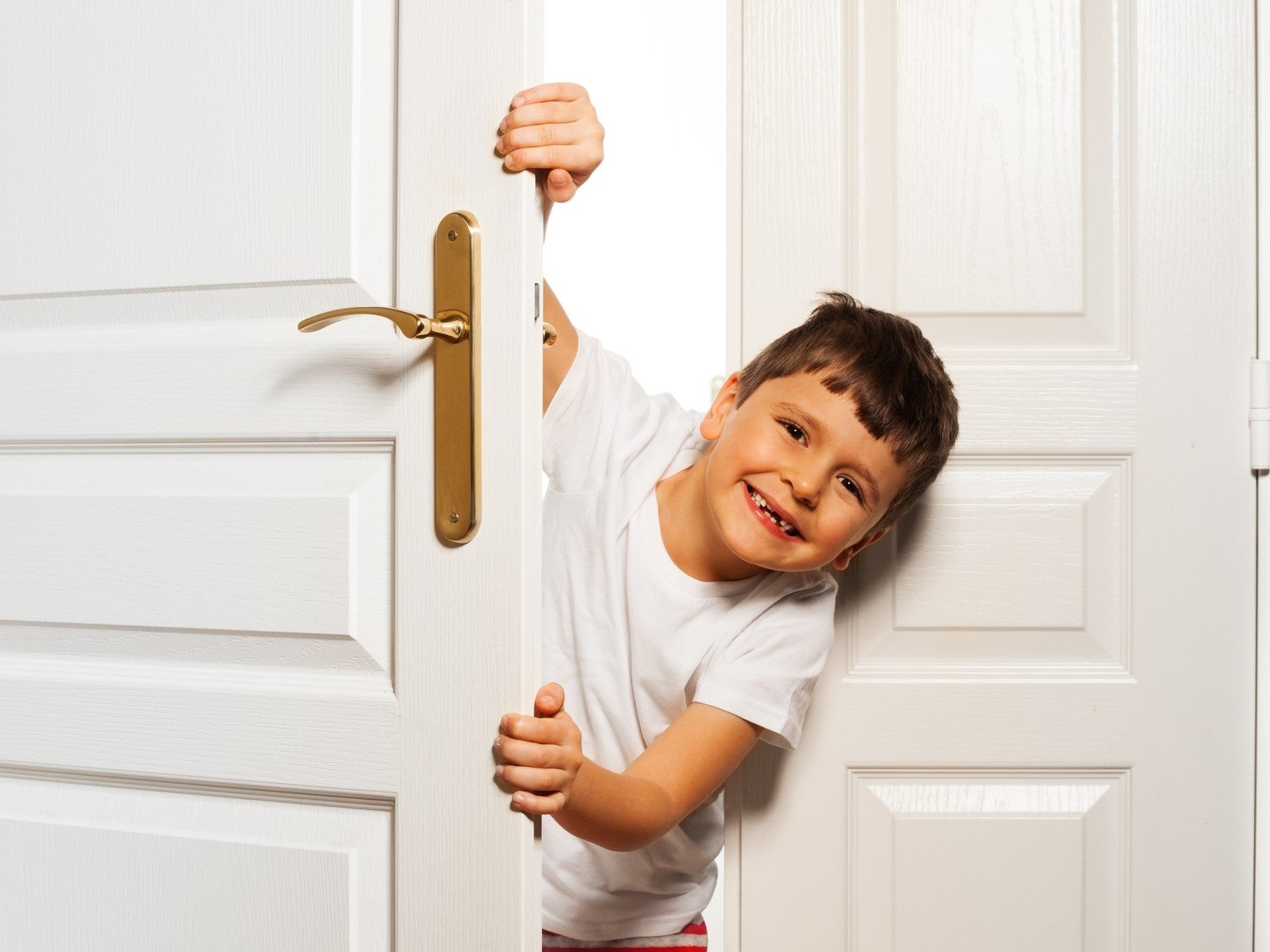
Right up there with the negativity of “oral motor therapy" (i.e. therapy to build oral movement capability and speech skills) is anything that has to do with "oral SENSORY motor therapy.” In fact, it’s even more taboo.
While preparing The Perfect Oral Motor Storm (podcasts/handout), I came across a statement by Dr. Gregory Lof (2017). I nearly fell out of my chair: “Awareness and its role in therapy is always questioned.” Spoken like a true R-LITE (Researcher—Lacking in Therapy Experience).
I continued to read, and at first, I actually thought Dr. Lof was joking. He equates (or perhaps, accuses) therapists that do oral motor of doing “warm-ups” in therapy “to increase blood circulation so muscle viscosity drops, thus allowing for smoother and more elastic muscle contractions (Safran, Seaber, & Garrett, 1989). Geezz--that’s a Sports Medicine article!
In addition, Dr. Lof admits to his conundrum: “If clinicians are not using the term warm-up to identify a physiological task to “wake up the mouth,” then perhaps they believe that they are providing some form of “metamouth” knowledge about the articulators’ movement and placement.” (We know that “meta” is when something refers back to itself.) He goes on to say, “children have very little consciousness of how speech sounds are made.” Ya think? I don’t expect a child, or even an untrained adult to “know” and explain how speech sounds are made. That’s my job as an SLP: to know, to share, and to use the information to the child’s benefit.
Bottom-line: To a speech-language pathologist working with a client, “awareness” is paramount to facilitating change. Most experienced therapists know why they apply sensory input and the value of it. It’s not to “warm up” the muscle fibers before a hearty round of oral exercise. And “awareness” goes far beyond a child knowing and explaining how a speech sound is made. Instead, it’s about the judicious use of sensations—visual, auditory, tactile and proprioception—to shape and facilitate meaningful oral movements.
“Speech production is dependent on both somatosensory [including intra-oral tactile and proprioceptive feedback] and auditory feedback. …Somatosensory information is central to achieving the precision requirement of speech movements,” (Nasir, Ostry, 2006).
Studies
The application or reference of oral sensory therapy is rarely studied and presented in journals. However, in a rare article, Terband and Maassen (2010, in The Netherlands) propose that "oral sensitivity could be a core deficit in children with childhood apraxia of speech (CAS)." Good—that’s a start.
Also, following are summaries of two therapy-oriented articles that reference the use of oral sensory therapy.
Lundeborg and McAllister (2007, done in Sweden) treated a child with severe developmental dyspraxia with intra-oral sensory stimulation and electropalatography (EPG).
- The little girl began her 11-month therapy regime when she was 5 years of age and was described as severely unintelligible: “She used long sentences but had a very restricted sound repertoire. Her articulation pattern was deviant with groping behavior. It was almost impossible for her to imitate single sounds and had some problems with simple non-speech movements.”
- In essence, therapy comprised general vibratory oral stimulation and articulatory training using EPG as a visual guide.
- When the study was completed, they noted that her speech improved significantly, but “it was far from age-adequate.” She, however, “was easy to understand even when speaking spontaneously.”
The second, was cooperatively done by an SLP and two dentists. It was a longitudinal study conducted in Sweden by Carlstedt, et al. (2007).
- Purpose: To study the effects of palatal plate therapy on oral motor function during a 4-year treatment period.
- Patients: Twenty children with Down Syndrome, mean age 24 months.
- Procedures: Each of the 20 children were randomly assigned to a palatal plate group (9 kids), or to a control group with no palatal plate (11 kids). All children in both groups had been enrolled in the same orofacial physiotherapy program from birth. Orofacial muscle function was documented using videos of the face at baseline, and after 1 year, and after 4 years. The palatal plate contained a “stimulating button anterior to the A-line to influence tongue position and increase tongue activity.”
- Results: After one-year there was significant improvement in mouth closure and in reduction of tongue protrusion. These variables also increased after 4 years, but not significantly.
- Conclusion: The results indicate that palatal plate therapy in combination with orofacial physiotherapy may have beneficial long-term effects on oral motor function in Down Syndrome children.
An interesting comment by Carlstedt, et al.: “Continuous orofacial stimulation at an early age is important for Down Syndrome children. In Sweden this is initiated and performed by speech and language pathologists in habilitation centers.” Maybe I'll move to Sweden.
Remember: “Sensation” is how we humans receive ALL information. Regardless of the therapeutic methodology, ALL speech therapy involves some form of sensory input--auditory, visual, tactile, thermal, taste, vibratory, proprioceptive, etc.
And, unlike what some believe regarding oral sensory-motor therapy, the auditory piece is not negated. Auditory feedback during speaking is important, in fact, it’s critical—but it only happens after something is said. Intra-oral sensory receptors provide an immediate window to the oral mechanism—the source of speech.
Here’s to a great week of therapy!
All the best to you,
Char
References
Carlstedt, K., Henningsson, G., Dahllof, G. (2007). A longitudinal study of palatal plate therapy in children with Down syndrome: Effects on oral motor function. Journal of Disability and Oral Health, 8 (1),13-19.
Lof, G.L., (2017). Tools for Skeptical Thinking; Logic, Theory and Evidence Against the Use of Nonspeech Oral Motor Exercises (NSOME) to Change Speech Sound Productions in Children. Handout at The Oregon Speech and Hearing Association Convention. Page 17.
Lundeborg, I., and McAllister, A. (2007). Treatment with a combination of intra-oral sensory stimulation and electropalatography in a child with severe development dyspraxia. Logopedics Phoniatrics Vocalogy, Vol 32,71-79. (A study in Sweden.)
Nasir, S.M., Ostry, D.J. (2006). Somatosensory precision in speech production. Current Biology, 16,1918-1923.
Safran, M., Seaber, V., & Garrett, W. (1989). Warm-up and muscular injury prevention: An update. Sports Medicine, 8,239-249.
Terband H., Maassen, B. (2010). Speech motor development in childhood apraxia of speech: Generating testable hypothesis by neurocomputational modeling. Folia Phoniatrica et Logopedica, Vol 62 (3),134-142. (In The Netherlands.)
Leave a comment (all fields required)
Comments will be approved before showing up.

![#71 Telepractice Tips 'n Info (Part 4) [Is my child working or just playing games?]](http://speechdynamics.com/cdn/shop/articles/Game_Pieces_and_Hand_7_x_3_2048x.jpg?v=1605804364)